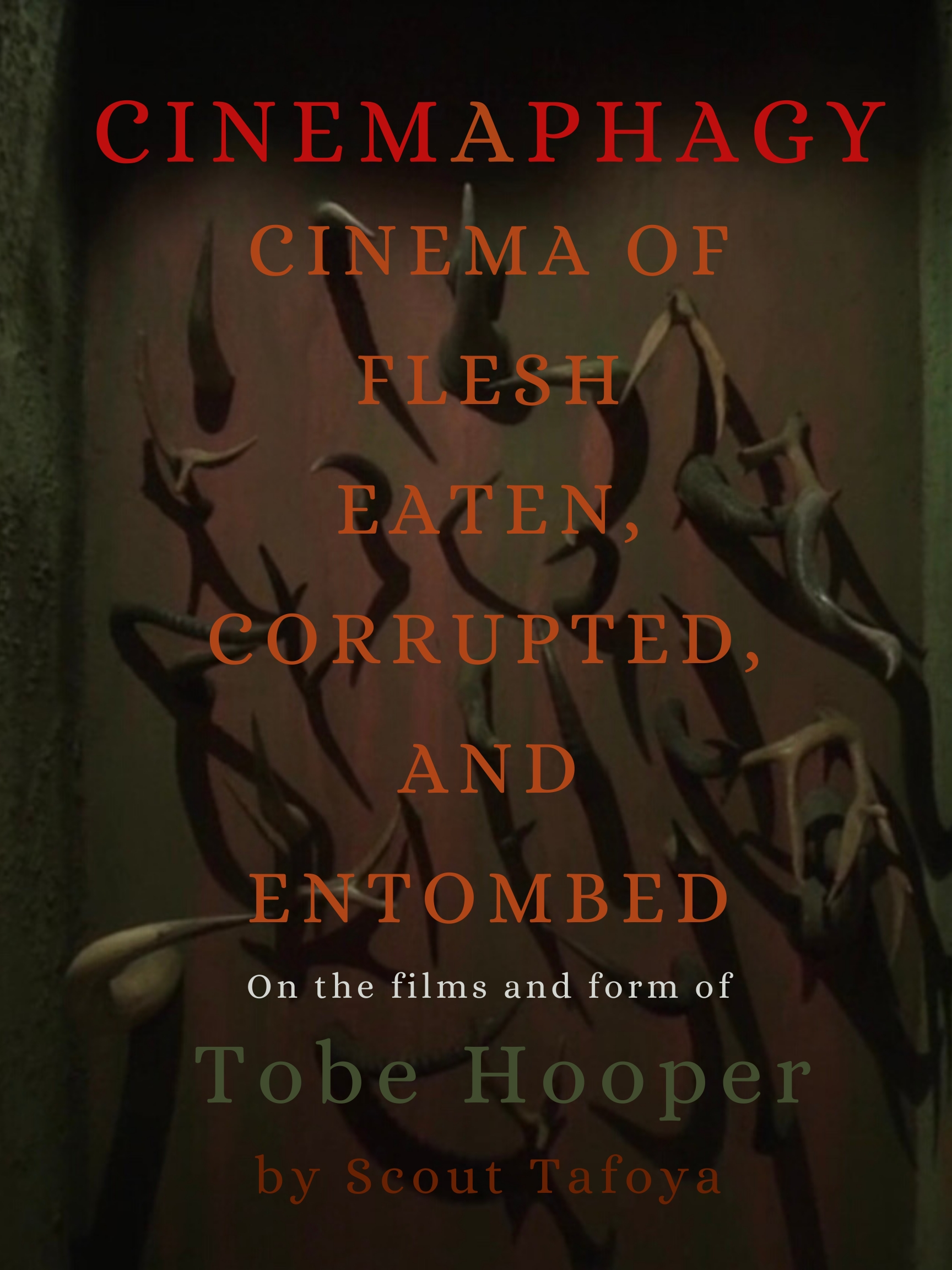
Cinemaphagy: On the Psychedelic Classical Form of Tobe Hooper
By Scout Tafoya
He directed The Texas Chain Saw Massacre, the most infamous and visceral horror film of all time. He directed Poltergeist, one of the most successful ghost stories of the 20th century. He was called a Master of Horror and he worked with screen legends James Mason, Neville Brand, Karen Black, Fred Willard, Dennis Hopper, Anthony Perkins, Mel Ferrer & Marie Windsor. He elegantly navigated the works of pulp legends Ambrose Bierce, Stephen King, Cornell Woolrich, & Richard Matheson. And yet Tobe Hooper is one of the most unsung film artists of the last fifty years.
How did the man famous for creating some of the most endearing images of terrible things, who did for the hardware store what Jaws did for the beach, become someone in need of rescue?Cinemaphagy is the study of an artist’s working life, his bountiful creativity, his ardent cinephilia, his prolific career in film and television, his lasting influence beyond the saw. Horror movie directors are too frequently pigeonholed as purveyors of the macabre but in truth Hooper was one of the most boldly experimental genre filmmakers in the game, fusing a Texan psychedelia with an earnest classical style gleaned from years watching classic films. Tobe Hooper’s life and work is like four years of film school, and every film he made, no matter how thankless, no matter how silly the assignment on paper, became a rich, roiling text on the political underside of the American cinema. No one made movies about cinema less ostentatiously and with more love.
Movies with lurid titles like Spontaneous Combustion and The Mangler hide essays about the history of labor, Cold War iconography, and the corrosive legacy of a culture built on lies. Tobe Hooper is still too often represented as a man with a monolithic legacy, the creator of one great film and nothing else. It’s well past time the depth and breadth of his obsessions and his gifts were discussed by a culture that ignored his years of hard work. Tobe Hooper directed The Texas Chain Saw Massacre but that is literally just the start of one of the most exciting, free, and expressionistic bodies of work in the American cinema.
Lucas Mangum, Splatterpunk Award-nominated author
Scout Tafoya’s Cinemaphagy is a comprehensive, impassioned look at one of the most misunderstood talents to ever step behind the camera. Lauded for Texas Chainsaw, discredited for Poltergeist, and loathed for The Mangler, Tobe Hooper was an oft underappreciated master of the genre. With this loving, yet honest and academic tribute, the late auteur gets some long overdue attention. With any luck, this is only the beginning.
John Semley, author of Hater and This is a Book About the Kids In The Hall
An exhaustive and engaging volume, which reclaims a misunderstood–and sometimes outright maligned–filmmaker. Tafoya’s book makes a persuasive case for Tobe Hooper’s singular importance not only in the canon of horror cinema, but popular culture writ large.
Our culture had greedily consumed his work for years and spit out his bones, making it nearly impossible for him to make a living in the US as an artist (Djinn was shot overseas with international backing, after Hooper had spent decades making exclusively mid- to low-budget film and TV throughout the ’90s and 2000s). This kind of cowardly anti-aestheticism must come to an end. Just before his death, he was still able to direct and direct well. Yet his films had to sneak in front of audiences. The time for Hooper to take his place as one of the great American artists was long ago, but now will have to do. He’s gone, but the work is, thankfully, timeless.
So what is the book you’re about to read? It’s a couple of things: there’s a little information about his working life—his biography as it coincides with the movies he made. This is not an attempt to draw the most complete version of Hooper’s life. He passed away before I got a chance to interview him, and I did not speak to his family and so this will not be a remotely thorough look at his life as a person, husband, father, or any of the other social roles he fulfilled throughout his incredible life. Rather, this is the first serious analytical manuscript on Hooper’s complete works as a director, consisting of essays on every single film and TV show he directed that can be found. Currently his pilot for the 1998 television series Prey remains only accessible at the UCLA Film and Television archive and thus it was not within my means to watch it for research. The rest are accounted for and slotted into, what I hope, is a complete portrait of the working methods and form of one of the most interesting and neglected artists who ever worked his way through the American studio system. This is a critical and technical study, analyzing every camera movement, every homage to classic Hollywood and horror, every recurring motif; this is a portrait of a man drawn in his obsessions and each of his decisions behind the camera. Hooper was never treated like other directors, and this is an attempt to give him serious consideration. The irony that this book was turned down by thirty other publishing houses, including university presses, is not lost on me. People fought tooth and nail to keep Hooper from being treated like an artist. That stops now.
- Scout Tafoya